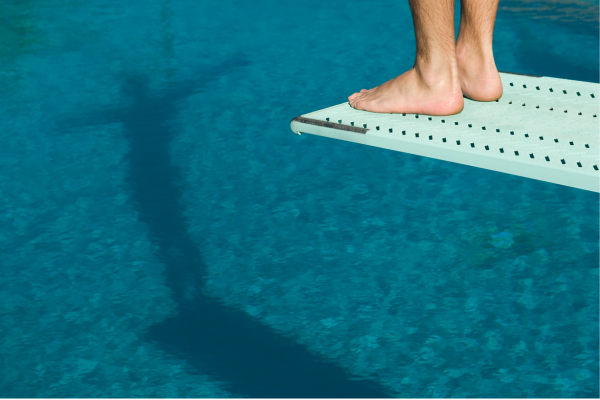Where Have All the High Dives Gone? 2018 Update

Tom J. Griffiths, Ed.D., Aquatic / Water Safety Expert::::
For the past quarter century, high diving boards (3-meters; ten feet) have been disappearing from public and private swimming pools across the country. This swimming pool staple, which so many middle aged and older Americans learned to love while they were children, is no longer available for their children and grandchildren.
Statistics indicate that springboard diving is a very safe sport. That is because the National Collegiate Athletic Association (NCAA), USA diving and many other water safety agencies have safety training programs for their coaches and follow strict depth and distance requirements to provide safe “diving envelopes” in the water for divers/jumpers. So what’s the problem?
Far too many three-meter (high dives) were placed in recreational settings without the assistance of qualified coaches and springboard diving agencies. Consequently, numerous falls to unprotected concrete decks below have occurred around the country resulting in death or paralysis. Hence, high dives are quickly becoming dinosaurs.
In a Penn State study published in Athletic Business Magazine, highly trained divers were simply asked to step off the three-meter diving board and land safely, feet first in the water ten feet below. The average elapsed time for all subjects was approximately half a second. This illustrates that accidental falls to the deck are just as fast and as a result, extremely difficult to supervise. Therefore, if existing three-meter diving boards are to remain in place, or if new high dives are to be installed, they must be engineered for safety by making them “fall-proof.” What other activities allow minor children to climb unsupervised up a nearly vertical ladder over hard concrete with bare feet in a wet environment? Children can no longer climb to heights on playgrounds or in water parks, but unfortunately there are still some pools that allow unsupervised and untrained young children to participate in this extremely dangerous activity.
There are safer alternatives for three-meter diving boards:
- Remove the ladder and replace it with a safer stairway with landings and spindles, or even a circular stairway. Both should have a multitude of safety railings small enough for a minor to grasp.
- Enclose and extend the railings on the diving board level so that they go well beyond the swimming pool edge and cannot allow a minor to fall through or in between the railings. Connect the horizontal three meter railings to the ascending pools railing from the deck so that the ascending rails do not have to be let go prior to grabbing the diving board railings.
- Pad and cushion the surrounding deck below just in case. Many effective soft and cushioned paddings are now available to protect those who fall.
- Supervise, train and regulate who can use the diving board and when. Consult USA diving for details.
- A swim test should always be required for anyone using any diving board because the minimum depth of water required is 12 feet. Swim tests and wrist bands may both be needed to best protect those using diving boards in deep water.
Older three-meter diving board installations call for extraordinary efforts to make them safe. Existing three-meter diving boards constructed and installed in recreational settings to old standards must either be renovated or removed to provide a safe opportunity for young people to be introduced to the thrill of springboard diving. All three-meter diving boards, regardless of the environment they are in, must be regulated and supervised aggressively. Hitting the concrete pool deck below three-meter diving boards has resulted in death, catastrophic brain injuries and many other traumatic injuries.
Tom J. Griffiths, Ed.D., Aquatic / Water Safety Expert at DJS Associates, can be reached via email at experts@forensicDJS.com or via phone at 215-659-2010.

